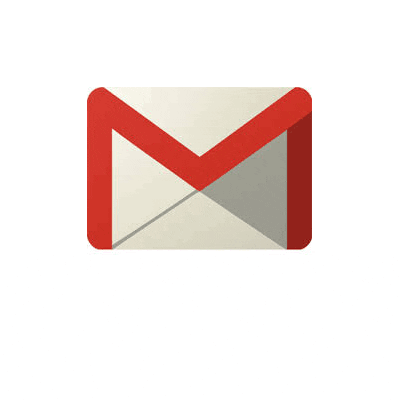Today, competition in the digital world is constantly evolving. Both large and small companies use data to make decisions about their products, pricing, and strategies. Artificial Intelligence (AI) now enables businesses to analyze competitors in new, automated, and highly accurate ways.
In the past, competitive analysis required significant time and manual effort. Now, AI can process vast amounts of information in seconds. This helps provide a clearer picture of what's happening in the market and how other businesses are behaving.
What Is Competitive Analysis with AI?
AI-driven competitive analysis transforms the traditional way of studying the competition. In the past, this process involved manually visiting competitor websites, reading market reports, and reviewing social media. With AI, these steps are completely automated.
Artificial Intelligence tracks multiple data sources simultaneously. It extracts information about pricing, social media content, customer reviews, advertising, and brand mentions. Then, it cleans and organizes this data so it's comparable and useful for decision-making.
A key difference is that AI not only shows what has already happened—it also identifies hidden patterns and emerging trends. This allows businesses to answer questions like why a market shift occurred and what competitors might do next.
Core AI Capabilities in Competitive Analysis:
- Real-time processing: Continuously updates information without human intervention
-
Pattern detection: Finds relationships between data that would be invisible manually
-
Predictive analytics: Anticipates future moves based on historical data
Key Benefits for LATAM Companies
AI applied to competitive analysis offers specific advantages for Latin American companies aiming to compete in global markets.
Automation eliminates repetitive tasks such as extracting information from websites, classifying data, and tagging relevant content. This frees up valuable time that teams can dedicate to strategy and decision-making.
The analysis works in real time, enabling companies to instantly monitor changes in competitors’ pricing, inventory, and ad campaigns. This speed is crucial in markets where prices change frequently or new products are launched regularly.
AI detects anomalies and patterns that a person wouldn't easily notice. For example, it can identify correlations between a competitor’s ad campaigns and pricing changes, or detect when they are testing new geographic markets.
Step-by-Step: Automating Data Collection
Implementing AI for competitive analysis requires a structured approach that starts with clear objectives and progresses toward full automation.
1. Define Objectives and Keywords
The first step is to identify which specific business questions you want to answer. These might include whether there's a price war in your category, when your competitors launch new products, or how customers perceive different brands.
Establish measurable key performance indicators (KPIs) before getting started:
-
Weekly price variation by product category
-
Social media share of voice compared to top competitors
-
SEO ranking growth for strategic keywords
-
Frequency of changes in advertising creatives
Define a clear taxonomy with specific keywords by category, product, geographic segment, and demographics. This structure will guide both the data collection and the later classification.
2. Set Up Web Scraping for Competitor Sites
Web scraping is the automated extraction of public information from websites. To implement it effectively, set up crawlers with IP rotation, respect for robots.txt files, and rate-limiting controls to avoid being blocked.
Crawlers can extract various types of information from competitor sites:
-
Complete product catalogs with pricing and availability
-
Product descriptions and landing pages
-
SEO metadata like titles and descriptions
-
FAQ sections and policy pages
Standardize the extracted data so that currencies, units of measurement, and attributes are comparable across different sources. Set different scraping frequencies based on importance: daily for pricing, weekly for static content.
3. Apply Sentiment Analysis on Social Media
Sentiment analysis uses AI models to classify mentions and comments based on emotional tone. The algorithms can distinguish between positive, neutral, and negative comments, and also identify the specific topic of each mention.
Integrate data from multiple social platforms relevant to your market: X (Twitter), Instagram, TikTok, Facebook, specialized forums, and local communities. Each platform offers different types of insights into brand perception.
The system can detect unusual spikes in conversation, identify influential users talking about your category, and find messages that correlate with changes in sales or customer churn.
Essential Metrics: SEO, Pricing, Social, and Sentiment
Effective AI-driven competitive analysis metrics are organized by channel and allow for direct comparisons between competitors.
Traffic and Keywords
Monitor the rankings of strategic keywords, especially those in the top 3 and top 10 search results. Track estimated organic traffic by URL and product category.
Analyze top backlinks and referring domains, paying attention to newly gained or lost links. Record changes in featured snippets, “People Also Ask” sections, and other special SERP features.
Price and Promotion Indexing
Collect data on minimum, average, and standard deviation of prices by SKU or segment. Evaluate the frequency and depth of discounts, special offers, and promotional bundles.
Monitor visible inventory availability and promised delivery times. Calculate price elasticity by observing how demand changes when competitors adjust their prices.
Share of Voice and Engagement
Share of voice represents the percentage of mentions or impressions a brand captures within its category. Measure engagement rate by platform, distinguishing between organic and paid content.
Track competitors’ publishing cadence, the topics dominating their conversations, and the content creators they collaborate with. When possible, estimate the cost per result of detected ad campaigns.
AI Tools for Competitor Research
AI-powered tools for competitive analysis are divided into specific categories based on the type of data they process and the insights they generate.
SEO and Advertising Platforms
AI-driven SEO tools allow you to research competitor keywords, track search engine rankings, and audit technical aspects of websites. They also analyze backlink profiles to identify link-building opportunities.
Advertising intelligence suites estimate competitors’ ad spend, analyze the creatives used, identify target audiences, and reveal which channels they are investing their budget in.
Social Listening Engines
These platforms capture conversations on social media, forums, and digital media using AI to process large volumes of text. They automatically classify mentions by topic, sentiment, and relevance.
The algorithms detect emerging trends, identify potential crises before they escalate, and calculate metrics such as share of voice within specific categories.
Digital Agents Integrated with CRM
Specialized digital employees connect directly to CRM systems to enrich account information with competitive data. They generate automatic summaries, update relevant fields, and create tasks based on detected changes in the competitive landscape.
These agents can automate periodic reports, compare the performance of key accounts against competitive benchmarks, and suggest specific commercial actions. Darwin AI offers this type of integration, allowing competitive insights to flow directly into existing sales processes.
Real-Time Visualization and Alerts
Effective visualization transforms complex data into actionable information that teams can use immediately.
Interactive Dashboards
Dashboards organize information by key dimensions such as country, product category, or specific competitor. They include drill-down capabilities, filters by date ranges or product codes, and period-over-period comparisons.
Annotations allow important events to be marked, such as product launches or regulatory changes. Benchmarks show how your performance compares to industry averages.
Key elements of effective dashboards:
-
Action indicators: Highlight what changes to make today in pricing, inventory, or campaigns
-
Visual alerts: Use colors and symbols to emphasize significant changes
-
Historical context: Show long-term trends alongside current data
Automated Notifications
The system generates alerts when it detects changes that exceed predefined thresholds. These may include sudden price changes, new advertising creatives, competitor stockouts, or unusual spikes in negative mentions.
Notifications are automatically routed to the appropriate teams. Price changes go to the sales team, new ad campaigns to the marketing team, and service issues to the customer experience team.
Dominate Your Market with Responsible AI and Human Oversight
The responsible use of AI in competitive analysis requires balancing automation with human supervision and ethical compliance.
Data collection with AI operates under legal and ethical constraints. Systems respect platform terms of service, comply with data privacy regulations, and focus exclusively on publicly available information.
AI algorithms may contain biases or misinterpret data. Human oversight validates critical results, reviews detected anomalies, and makes final strategic decisions based on the full business context.
The combination of intelligent automation and human oversight maximizes accuracy while maintaining the flexibility to adapt strategies as the market evolves. Platforms like Darwin AI facilitate this integration, automating repetitive tasks while preserving human control over important decisions.
FAQs About AI for Competitor Analysis
How can I ensure the accuracy of data automatically extracted from competitor websites?
Implement cross-validation by comparing data from multiple sources, perform random sampling to verify accuracy, and schedule regular audits. Maintain quality rules such as deduplication and normalization, complemented by regular human reviews to confirm key findings.
How often should human oversight be applied to an automated competitive analysis system?
Automated systems perform best with weekly reviews for high-impact insights and monthly adjustments to models and taxonomies. Human analysts interpret context, confirm causal relationships, and make strategic decisions based on the processed data.
How can I integrate competitive intelligence data with my CRM without disrupting existing processes?
Use APIs and native connectors for automatic information syncing. Digital employees can enrich account records, update specific fields, and generate follow-up tasks without altering current workflows or requiring extensive team training.
What legal considerations should I keep in mind when extracting public data from websites for competitive analysis?
Respect each platform’s terms of service, comply with local data protection regulations, and limit extraction to publicly available information. Implement appropriate rate-limiting controls, clearly identify your crawlers, and prioritize official APIs when available for greater stability and compliance.
.png)





















